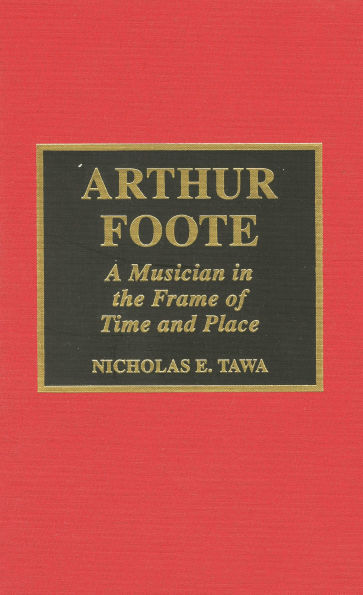Arthur Foote: A Musician in the Frame of Time and Place
Arthur Foote (1853-1937) was one of the most important American composers who worked creatively in the late 19th and early 20th centuries. His musical style was at first Germanic in orientation, soon changing to include Anglo-Americanisms and modifications derived from French and Russian composers. His compositions were highly esteemed by his contemporaries. Moreover, today's listeners continue to be struck by the coherency of his music, both in its general form and in its details. They note a command of craft, an integration of tone with desired expression, and an honest straightforward sound that brooks no pretentious complexities or enigmas of meaning.In addition, he was admired as an educator, musical theorist, keyboard performer, and choral music director. His books and articles on keyboard pedagogy and those containing his insightful contemplation of aspects of modulation and third-relationships in musical structures are still of great value.Assiduous as he was in preserving various aspects of his public life in his several scrapbooks, Foote strove to keep his private life out of the public eye. He discouraged the publication of his more personal letters, and late in life even desired their destruction. This book attempts to gather all the available information in order to give information about the man, his life, and his thinking. Lastly, it looks into the music, what it is, why and where it was written, and what its significance is. With bibliography and musical examples.
1147612752
Arthur Foote: A Musician in the Frame of Time and Place
Arthur Foote (1853-1937) was one of the most important American composers who worked creatively in the late 19th and early 20th centuries. His musical style was at first Germanic in orientation, soon changing to include Anglo-Americanisms and modifications derived from French and Russian composers. His compositions were highly esteemed by his contemporaries. Moreover, today's listeners continue to be struck by the coherency of his music, both in its general form and in its details. They note a command of craft, an integration of tone with desired expression, and an honest straightforward sound that brooks no pretentious complexities or enigmas of meaning.In addition, he was admired as an educator, musical theorist, keyboard performer, and choral music director. His books and articles on keyboard pedagogy and those containing his insightful contemplation of aspects of modulation and third-relationships in musical structures are still of great value.Assiduous as he was in preserving various aspects of his public life in his several scrapbooks, Foote strove to keep his private life out of the public eye. He discouraged the publication of his more personal letters, and late in life even desired their destruction. This book attempts to gather all the available information in order to give information about the man, his life, and his thinking. Lastly, it looks into the music, what it is, why and where it was written, and what its significance is. With bibliography and musical examples.
136.0
In Stock
5
1

Arthur Foote: A Musician in the Frame of Time and Place
368
Arthur Foote: A Musician in the Frame of Time and Place
368Hardcover
$136.00
136.0
In Stock

Product Details
| ISBN-13: | 9780810832954 |
|---|---|
| Publisher: | Bloomsbury Academic |
| Publication date: | 09/18/1997 |
| Series: | Composers of North America , #22 |
| Pages: | 368 |
| Product dimensions: | 5.50(w) x 8.50(h) x 1.25(d) |
About the Author
From the B&N Reads Blog
